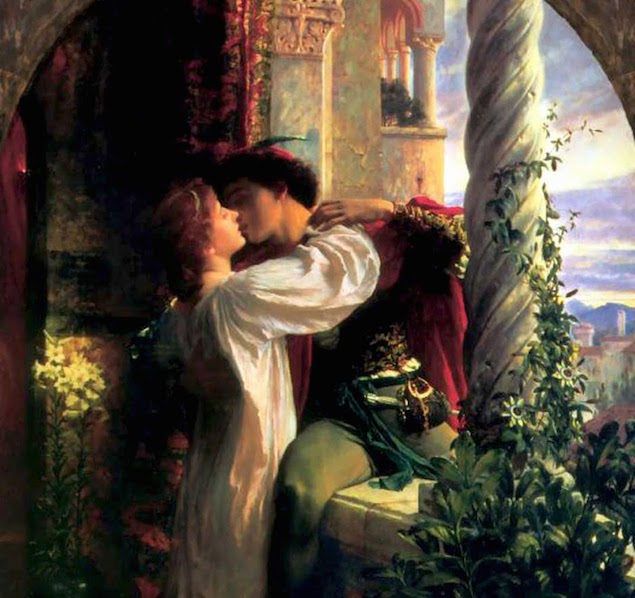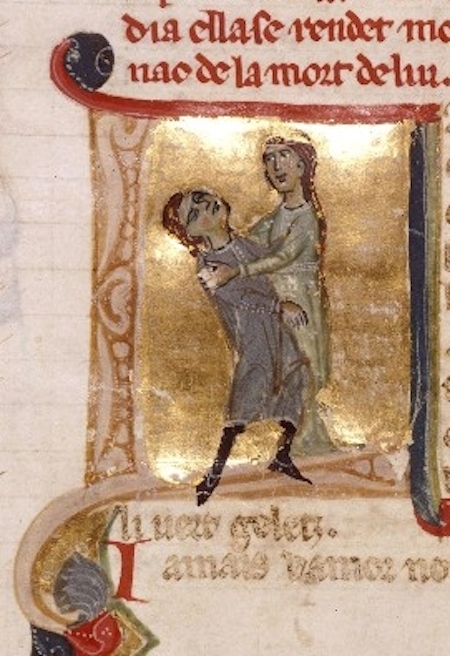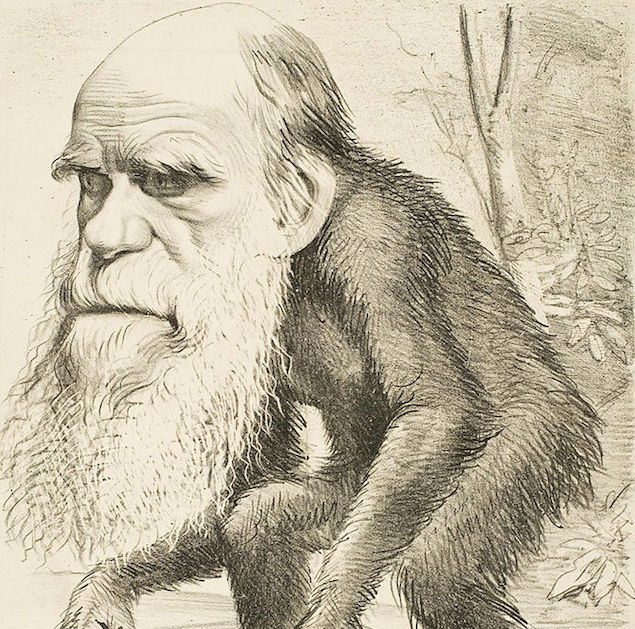Relationships • Romanticism
A Short History of Love
The strange thing about love is that even though we experience it in a deeply personal and apparently instinctive way, it has a history. In other words, people around the world haven’t always fallen in love the way they do now.
The point of rehearsing a few of the telling moments in love’s history is to remind ourselves that there are different ways of arranging relationships, depending on what a given society happens to believe in. Love is a cultural invention and we are not at the end of its evolution. We may, in fact, still be only at the early stages of the history of love. We are still learning what we need and how we might get more successful at love.
Mari, Syria, 1775 BC
King Zimri-Lim of the ancient city of Mari, on the banks of the Euphrates, marries Shibtu, the princess of the neighbouring kingdom of Yamhad.
Far from being the outcome of love, this marriage, like that of many between powerful people in the ancient world, is purely transactional. Mari occupies a critical position in the trade routes between Syria and Mesopotamia, and marrying Shibtu will allow Zimri-Lim to expand his wealth and power.
Zimri-Lim’s attitude to marriage continues with his children. He marries off eight of his daughters to rulers of neighbouring cities, forcing each of his new sons-in-law to sign a document pledging themselves to him.
The people of Mari are in effect saying that what gives a marriage meaning isn’t how much the couple happens to love one another, but whether it is beneficial in terms of trade, connections and war.
This is so alien to us, it’s worth reflecting on just how much we nowadays refuse to entertain – at least in public – any practical considerations when marrying. Feelings are meant to be our only lodestars. Yet for thousands of years, until only a minute ago on the historical clock, it was unambiguously meant to be only about land, power and money. The notion that you should love your spouse would have seemed plain laughable. This may have created a collective trauma we’re still in flight from.
Blaye, France, 1147
Jaufré Rudel, the Prince of Blaye, sets sail for Tripoli, in modern day northern Lebanon. He is off to see the Countess of Tripoli, with whom he has fallen deeply in love. Rudel is one of the earliest known Troubadours, or skilled court poets, who rise to prominence in southern France in the 12th century and write poetry on one subject exclusively: Love. Rudel has written many poems in honour of the Countess and wants to write some more in her presence.
But Rudel’s idea of love is very particular and at that time, dramatically new: it’s love that’s utterly divorced from practical considerations, that doesn’t involve children, money, dynasties or even any kind of reciprocation. The Troubadour poets never try to have sex with the objects of their love. Their focus is exclusively on what we would call the infatuation – or more colloquially, the crush – side of love.
Rudel has fallen in love with the Countess without ever having set eyes on her. Pining away for his lady from hundreds of miles away, he composes and sets to music many songs expressing grief and joy.
Unfortunately, he falls ill en route to the lady and has to be stretchered into Tripoli, where the countess hears about him and visits him in his chamber. Rudel recovers momentarily, before dying, finally at peace, very chastely, in her arms.
The Troubadours took love very seriously, only they didn’t see it as linked to marriage. Romantic love was something you felt for someone you were never going to do household chores with. And that may be the secret of its intensity. This kind of love was spared too much contact with daily life. Rudel could imagine how lovely the Countess of Tripoli was – without ever having to dispute with her about the right place to hang a tapestry or get frustrated if she didn’t particularly want to do a special embarrassing thing for him in bed. Their love could remain pristine.
The Troubadours show us a historical moment when the idea of love was not tied to the notion of moving in together or to the intertwining of two practical, economic and social lives (using the same toilet, sharing utilities bills and trying to go on camping holidays with your partner’s friends).
Versailles, France, 14 September 1745
At 6 o’clock in the evening, in a move engineered and planned for weeks, Jeanne-Antoinette Poisson, a 23-year-old beauty from Paris, rouged, powdered and wearing a black off-the-shoulder dress, enters the Cabinet du Conseil, approaches King Louis XV, and curtsies three times.
This simple gesture makes it official: Jeanne-Antoinette is the king’s maîtresse déclarée, or chief mistress, and from now on, she will be known as Madame du Pompadour, and reside at court with the king.
The king has, by this point, been married for 20 years, but marriage doesn’t mean fidelity. You marry for reasons of state, and have mistresses on the side. No one gets upset, that’s just what happens. Louis XV had several mistresses, including 14-year-old Marie-Louise O’Murphy, who is painted in a famous semi-pornographic painting by François Boucher.
At Versailles in the 18th century, there was an acceptance of the imperfect fit between marriage and love. It was understood that there would always be a tension between the two. Marriage was for children, practicality and continuity. Love was for excitement, drama and sex. One should never try to blend the two.
Rather than be underhand or deceitful like many people are today, the king of France simply split love from marriage – and, without shame or guilt, made his romantic attachments an organised, public part of his life with his wife.
Gretna Green, Scotland, 1 January 1812
A couple has just got married in a secret ceremony. John Lambton, the 1st Earl of Durham, who is posh and has land and responsibilities, and Harriet, the illegitimate daughter of the Earl of Cholmondeley, who has no money and little social status but is very pretty, are now man and wife.
Their families are furious – and have tried desperately to stop the wedding. But the couple are ‘modern’, which means they believe that in marriage, love should come first and practical considerations second. They’ve gone to Gretna Green, a village just inside Scotland, to escape English law – and are exemplars of the new philosophy of Romanticism, which privileges feeling over reason and impulse over tradition.
Romanticism transforms love. The old system of marrying for political or economic advantage slowly crumbles around the world. The village of Gretna Green becomes synonymous with illicit marriages, and John and Harriet are among hundreds of English couples in the late 18th and 19th centuries who elope there. The public appetite for stories of romantic dissent is such that the local priest publishes some bestselling memoirs of his time there, full of daring coach-rides across the border, and the wrath of unconsulted fathers who reach the runaway children too late.
Gretna Green becomes an important place because there is a growing belief that marriage should be the consequence of love. And that if two people love each other that alone is what matters. Income, the standing of the wider family, career and how the parents-in-law might get on seems irrelevant. And more than that: they begin to be cast not as wise, serious matters which really ought to be taken into account, but as things that could only seem relevant to gouty fathers, snobbish aunts and dried up conventional people with no care for the happiness of a couple.
Mostly, when we want to do something we take advice if we can from people who have done it before. Gretna Green stands for a remarkable shift in thinking, around relationships, which is powerful today: the assumption that people who have already had marriages are likely to be very poor advisors and guides to the young. Love is understood to be an enthusiasm, not a skill.
London, England, 1813
Readers of Jane Austen’s latest novel are on the edge of their seats as Fitzwilliam Darcy stumbles his way through a proposal to Elizabeth Bennet.
His offer of marriage promises to fix all her problems: not only is he handsome, but he is rich – and Elizabeth’s family, with four unmarried daughters to support, needs all the cash they can get.
But Elizabeth says no. Darcy, for all his gifts, is also arrogant and a snob. Pride and Prejudice may suggest women marry for money, but Elizabeth’s actions reveal a new and subversive belief rapidly gaining currency in English society: that they should love the man they marry too. It is an idea Austen supports strongly. Eleven years earlier, she had herself rejected a proposal of marriage, claiming “anything is to be preferred or endured rather than marrying without affection”.
In her greatest novel, however, things turn out for the best. Eventually, after many twists and turns, and despite her lack of standing and money, Elizabeth and Darcy marry.
What continues to strike readers today is that Jane Austen is deeply concerned about romance and about money. To marry only for money is, she argues, a disaster. But equally she holds that to marry only for love is terrible folly too. In her eyes a good marriage requires warmth and tenderness of heart and a strong practical, worldly, managerial competence. And from this, she draws the conclusion that few people are actually well-suited for marriage. She is unsurprised that many marriages are a little hollow or a little grim. Her novels depict numerous unsatisfactory relationships and a very few happy ones.
In the early years of the 19th century, Jane Austen is defining the wise ideal of modern love. She sees marriage as a hybrid enterprise: in some respects it is like running a small business, or organising a village fete. If you don’t keep track of the practical details and don’t have quite an efficient turn for administration, things will go badly wrong. But at the same time, marriage is a profoundly complex emotional encounter. And to thrive in it one needs emotional maturity, affection, playfulness and warmth.
Through her novels she is trying to present the reader with an education. In a truly classical way, she believes we can do few things well if we leave our performance to nature, luck and chance. A happy relationship depends on the maturity of both parties. In Pride and Prejudice, both Elizabeth Bennet and Darcy have to be improved – he has to lose his pride and she has to shed her prejudice – if they are to be capable of living well together. Love is something we need to learn.
London 24 November 1859
It’s the day Darwin publishes The Origin of Species. There is a huge initial resistance. But eventually much of the world is convinced by his arguments. Human beings are descended from the primates. And that means that we have inherited not just their skeletal structure but also a lot of their drives and basic psychology.
Darwin’s detractors are aghast at the implied humiliation. But there’s consolation in Darwin too, because he suggests that our inability to live up to our ideals is not wholly our own fault. We are, at any time, half apes. And for apes to aim for faithful, life-long, passionate, egalitarian relationships is to attempt to pull off something hugely difficult starting from a very unpromising base. No wonder we often fail.
Without particularly intending to, Darwin ushers in a strategic and useful pessimism about relationships. Rather than being, for instance, essentially monogamous, he implies that human beings might – by nature at least – be predisposed to (as many apes are) to polygamy, opportunistic sex and the dumping of one mate for another on the basis of nothing more than their breeding potential, signalled by such unedifying and unspiritual characteristics as how big their breasts are.
Aquatic Park, San Francisco, United States, August 1965
Jefferson Poland, wearing a flower behind his ear, strips off his swimming trunks and wades naked into the sea.
Poland is one of the first hippies. He wears his hair long and rejects the sophistication of modern life for a romantic notion of getting back to a natural state of grace. Behind him and three other protesters braving the icy cold ocean water is a cheering crowd of beatniks and anarchists, who hold up signs and chant the phrase “Sex is clean! Law is obscene!” in front of a hastily assembled group of reporters.
This event is one of many organised by groups advocating free love in the 1960s in America. They argue that society’s rules against nudity, same-sex relationships and sex before marriage are all forms of sexual repression.
Soon monogamy itself is being questioned; in an enlightened world, they argue, sexually liberated men and women should give up marriage, along with it, jealousy, adultery and divorce.
It’s a beautiful, deeply Romantic idea of what love could be – which eventually collapses into disaster.
Belgium, 2015
The country achieves a notorious distinction. It is the nation with the highest rate of divorce in the developed world, an astonishing 71% of couples split up. A newspaper in the country asks why, and the answer comes back clearly: initial expectations were not met.
Other countries are not far behind. In the UK, the divorce rate is 42%, in the US, 53%, in Hungary 67% and in Portugal 68%.
Part of the reason lies in the disappointment people feel with what had apparently been promised to them by the free-loving 1960s, and before that, by 19th-century Romanticism.
The dream of love survives, but it disappoints constantly. At dinner tables around the world, otherwise intelligent people complain that they simply cannot understand the strange and tricky subject of love.
Conclusion
The future hope for love lies in the notion of sacrifice: that is, in accepting that we won’t get everything we want from love, relationships or marriage. We’re trying to do something highly ambitious in our modern ideals of relationships: unite sex, affection, the raising of a family, a career and adequate material security. We will, by necessity, fail to get all of these.
The idea of sacrifice, though, helps us if we consider that getting half of what we really want and need might still be quite a lot – in comparison with what it would be like if we avoided relationships altogether. Clearly a solitary life can work really well for a few people, but mostly we hate living alone. The question should not be so much whether relationships live up to our ideal hopes of mutual happiness but whether they are better (if only a little) than not having relationships at all.
The future of love needs us to get interested in ambivalence: that is, in the capacity to keep on thinking that something is quite good even while we are painfully conscious of its many and striking day-to-day imperfections.



































